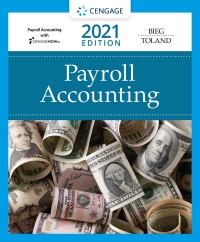e.com/coul . The following two hypotheses are tested: He: The proportion of U.S. adults who support gay marriage is roughly 50%. H: The proportion of U.S. adults who support gay marriage is above 50% (ie, the majority support). Suppose a survey was conducted in which a random sample of 1,100 U.S. adults were asked about their opinions on gay marriage, and based on the data, the P-value was found to be 0.002. Comment: Throughout this activity, use a 0.05 (5%) significance level (cutoff). Based on the P-value you can conclude that: The data provide significant evidence that the proportion of U.S. adults who support gay marriage is 50% The data provide significant evidence that the majority of US adults support gay marriage, The data provide evidence that Ha is more likely than HO G.e, it is more likely that the majority of U.S. adults support gay marriage). Not quite right. Recall that when the P-value is less than 05, we conclude that the data provide enough evidence to reject Ho and accept H. The data do not provide enough evidence to conclude that the majority of U.S. adults support gay marriage . . The following two hypotheses are tested: Ho: The proportion of U.S. adults who support gay marriage is roughly 50% He: The proportion of U.S. adults who support gay marriage is above 50% (i.e., the majority support). Suppose a survey was conducted in which a random sample of 1,100 U.S. adults were asked about their opinions on gay marriage, and based on the data, the P-value was found to be 0.002 Comment: Throughout this activity, use a 0.05 (5%) significance level (cutoff). Say that the P-value was not given, but rather, the following conclusion was advertised: "The survey does not provide enough evidence to conclude that the majority of U.S. adults support gay marriage." Which of the following could have been the P-value that led to this conclusion? 1.96 125 .045 Incorrect. Recall that it is when the P-value is not small (in our case, above .05) that we conclude that we don't have enough evidence to reject Ho, or equivalently, that we don't have enough information to accept H -1.96 n/courses/32568/quizzes/389477 The following two hypotheses are tested: . Ho: The average number of miles driven per year is 12,000. H: The average number of miles driven per year is less than 12,000. In a survey, 1,600 randomly selected drivers were asked the number of miles they drive yearly. Based on the results, the P-value = 0.068. Comment: Throughout this activity, use a 0,05(5%) significance level. Based upon the p-value, which of the following conclusions can be made? The data provide significant evidence that the alternative hypothesis is more likely than the null hypothesis The data provide significant evidence that the average number of miles driven per year is 12.000 The data provide significant evidence that the average number of miles driven per year is less than 12,000 The data provide significant evidence that the average number of miles driven per year is less than 12,000










